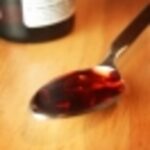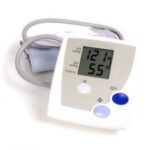There are many ways your body lets you know you are not in the healthiest state. You may have pain, elevations in temperature or blood pressure, or just generalized fatigue. Your joints could be swollen or you could just be unable to rid yourself of that nagging cough. Changes or symptoms are the best indicators of some type of glitch in your body.
But sometimes you feel just fine. There are no outward signs that your body is struggling to overcome certain obstacles to function at maximum efficiency – or so it would seem!
Remarkably, your nails may be an indicator of your overall health!
Your nails you ask? That’s right, your nails! Sometimes, the smallest changes in something as seemingly insignificant as your nails may be telltale signs that all is not quite right.
Does your doctor ever look at your hands? Maybe you don’t even notice, but chances are he inspects your nails more than you know. Aside from the normal problems nails can have, like becoming ingrown, infected, separated or falling off (usually due to trauma), nails can provide evidence that something is wrong inside your body.
Granted since nails grow slow, approximately ¼ of an inch per month, and are the last part of the body to receive blood and nutrients, nails that are damaged from diseases or conditions are not “real-time” indicators. In other words, if the end of the nail shows changes, such as stains, lines or ridges, the problem is not a new one. But if the nail grows in damaged then this is an indication that your body is presently experiencing an unhealthy state.
But what does that mean – an unhealthy state? If you were sick you would know it, right?
Well not all the time! Sometimes there are no outward signs of illness but yet your body is not functioning to its fullest capacity. Anything from a pre-existing condition to an unbalanced diet can disturb the body’s health.
DISCOLORATIONS
Healthy nails are uniform in color and free of discolorations and spots. Normal nails have a pinkish hue.
Dark nails can indicate a vitamin B12 deficiency or anemia, whereas splintering blackish lines under the nail can indicate a bleeding disorder, heart disease or infectious endocarditis, a serious heart infection. And dark lines can be a sign of melanoma, a type of cancer.
Yellow nails can range from liver disease, diabetes, lymphatic disease or respiratory disorders such as chronic bronchitis.
White nails can demonstrate possible kidney or liver disease or anemia. If the white nails have pink near the tips, this may be a sign of cirrhosis of the liver, whereas white stripes can show liver or heart disease. Small white patches, on the other hand, can be a sign of calcium or zinc deficiency.
Reddish nails can be a sign of heart disease. But red skin around the cuticles may be an indicator of poor metabolism of the essential fatty acids, or possibly the disorder called Lupus. And pitted reddish-brown spots may be a sign of psoriasis and the body’s need for increased Vitamin C, folic acid and proteins.
Gray nails can be a serious sign of arthritis. It can also indicate cardiac disease, glaucoma or excessive malnutrition.
Blue nails or deep blue nail beds often indicate cyanosis, or a lack of oxygen of some type from things like pulmonary disease such as emphysema or asthma. It can also be a sign of heart or lung disease.
Irregular lines or bands can also occur and be a sign or some internal problems. Irregular red lines can indicate Lupus or another connective tissue disease. And colored bands in Caucasians can denote cancer. Colored nail bands in non-Caucasians, however, are normal.
PLIABILITY AND TEXTURE
Some nail conditions, such as vertical ridges or white lines, are harmless and may become more pronounced as you age. But any changes which seem unusual, are persistent or are accompanied by other physical symptoms should be checked out.
Brittle nails can be associated with thyroid problems, impaired kidney function and/or problems with circulation. It can also be a sign of iron or biotin deficiency. If the nail is brittle yet soft and shiny without a moon, it may be a sign of hyperthyroidism, or an overactive thyroid.
Nails that split or fray can mean the body is lacking the necessary Vitamin C, protein and/or folic acid. It is also associated with psoriasis. Chipping, peeling and cracking can be a sign of poor nutrition. Unusually thick nails could mean you suffer from with circulatory problems.
Vertical ridges commonly indicate poor general health and poor nutrient absorption. It can also mean you suffer from arthritis. Vertical grooves can be a sign of aging, iron deficiency or kidney disorders. Conversely, horizontal ridges indicate severe physical and psychological stress and a vulnerability to arthritis.
Bumps or beading of the nail can indicate rheumatoid arthritis, whereas pitting is usually a sign of psoriasis.
SHAPE
Healthy nails are smooth with a slight curvature in conformity to your fingertips. Unhealthy nails may take an unusual shape.
Flat nails can indicate a Vitamin B12 deficiency. It can also be a sign of Raynaud’s disease, a condition that affects blood flow to the extremities. Spooning or concave nails can indicate a deficiency in iron or vitamin B12.
Shortened nail beds can denote heart disease. And clubbing, where the skin under the nails becomes thickened and bulging, and the nails curve down around fingertips can be associated with a number of conditions. Most often it is noted in heart and lung diseases which cause an oxygen deprivation. It is also seen with diseases of the liver or gastrointestinal tracts and can be a sign of lung cancer.
COMMON CAUSES OF NAIL CHANGES
Now before you inspect your nails and work yourself up in a panic consider this:
Nails can temporarily change in shape and color – it is only permanent changes that you should seek advice!
Think of that fire engine red nail polish you slathered on for that hot date night -that could temporarily change the color of your nails…
Or how about changing your nail polish with every outfit – overusing nail polish remover could damage your nails making them brittle or split…
Perhaps you unknowingly damaged your nails. Little whitish marks are common after a minor injury – say you banged your nail. These marks may last for several weeks or even months, but should disappear on their own. And a more forceful injury may cause the nail to become blackened or purplish, which will eventually heal on its own too.
Splitting or peeling nails could be a sign of simple over-exposure to harsh chemicals or frequent exposure to water and soaps. The use of lotions can relieve this common problem.
Or even those beautiful artificial or sculptured nails – not getting them refilled at least every two weeks creates gaps between your nail and the artificial one. This can create the perfect warm, moist environment for bacteria and fungus to grow! This is a simple nail problem.
And changes in shape and texture could be a sign of aging.
WHEN IN DOUBT, CHECK IT OUT
Damage and infections are common in nails – it’s not necessarily a sign that you have a life-threatening illness. But changes in your nails that you cannot track to anything you did might be cause for concern. If you’re troubled by troubled nails, ask your doctor!




